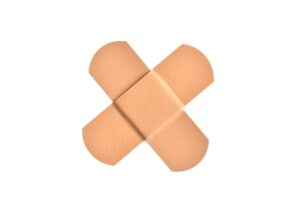Natural Pain Management: Individuals are increasingly opting for drug-free alternatives like acupuncture, herbal remedies, and mindfulness practices for conditions such as back pain, neck stiffness, migraines, and sciatica. Acupuncture, an ancient Chinese practice involving needle insertion at specific body points, has emerged as a prominent natural pain management solution. This holistic approach stimulates the nervous system, reduces inflammation, promotes healing, and provides lasting relief without medication side effects. With growing demand for non-opioid pain relievers, acupuncture offers a safe, effective path for chronic pain management, including back, neck, and sciatica conditions. Choosing qualified acupuncturists is crucial for optimal results and to ensure a relaxing, therapeutic experience that enhances overall well-being.
Looking for drug-free pain relief? Acupuncture offers a natural, effective solution for managing back pain, neck pain, and more. In this comprehensive guide, we explore the rise of acupuncture as an alternative therapy, delving into its mechanism to alleviate chronic aches.
From real-life success stories to tips on choosing the right practitioner, we empower you with knowledge. Discover how integrating acupuncture into your self-care routine can transform your well-being and provide lasting relief from natural pain management.
- Understanding Natural Pain Management: An Overview
- The Rise of Acupuncture as an Effective Alternative
- How Acupuncture Works to Alleviate Back and Neck Pain
- Real-Life Success Stories: Testimonials from Happy Patients
- Choosing the Right Acupuncturist and What to Expect
- Integrating Acupuncture into Your Self-Care Routine
Understanding Natural Pain Management: An Overview

Many people are turning to natural pain management techniques as a drug-free alternative to alleviate various aches and pains. Acupuncture, an ancient Chinese practice, has gained significant recognition for its effectiveness in treating back pain, neck stiffness, and even migraine headaches—a condition often referred to as migraine acupuncture. This holistic approach focuses on stimulating specific points in the body to promote healing and restore balance.
Natural pain management goes beyond acupuncture; it encompasses a range of treatments like herbal remedies, chiropractic care, and mindfulness practices. For instance, sciatica acupuncture has proven beneficial for individuals suffering from leg pain caused by nerve compression. Additionally, natural methods often target inflammation as a root cause, offering lasting relief without the side effects commonly associated with prescription medications.
The Rise of Acupuncture as an Effective Alternative

In recent years, acupuncture has emerged as a prominent and effective natural pain management solution for various conditions, including back pain, neck pain, and sciatica. This ancient practice, which involves inserting thin needles into specific points on the body, has gained significant traction as a drug-free alternative to opioid painkillers. The growing demand for non-opioid pain relief methods has led many people to explore acupuncture as a safe and holistic approach to treating chronic inflammation and pain.
Acupuncture’s effectiveness in treating these ailments is well documented. Research suggests that sciatica acupuncture can significantly reduce pain and improve mobility, making it a valuable tool in managing this debilitating condition. By targeting specific acupoints, practitioners can help alleviate not only the physical symptoms but also the stress and discomfort associated with chronic back and neck pain. This ancient healing art offers a promising path for individuals seeking alternative remedies for their pain without the risks or dependencies often associated with conventional medications.
How Acupuncture Works to Alleviate Back and Neck Pain

Acupuncture is an ancient practice that has gained recognition as a natural pain management technique for various conditions, including back and neck pain. It involves inserting thin needles into specific points on the body, known as acupoints, which are believed to stimulate the nervous system and promote the body’s natural healing response. When it comes to back and neck pain, acupuncture works by releasing tension in muscles, improving circulation in the affected areas, and reducing inflammation.
The process begins with a comprehensive consultation where an acupuncturist assesses the patient’s symptoms and medical history. They then identify the relevant acupoints related to joint pain therapy, such as those targeting sciatica acupuncture for nerve-related pain. During the treatment, the needles are carefully inserted, often in quick, precise motions, to trigger a soothing response. This can help alleviate not only the physical discomfort but also associated symptoms like migraines, offering a drug-free approach to managing chronic pain and promoting overall well-being.
Real-Life Success Stories: Testimonials from Happy Patients

In a world where many seek natural pain management solutions, acupuncture has emerged as a beacon of hope for those struggling with chronic back and neck pain. Real-life success stories abound, with countless patients sharing their transformative journeys. Take Jane, who had been plagued by sciatica for years, leaving her in constant, excruciating pain. After just a few sessions of acupuncture, she experienced significant relief and noticed a dramatic reduction in her inflammation. Now, free from the daily medications she once relied on, Jane can finally live her life pain-free.
Similarly, Michael, who had been dealing with severe migraines for most of his adult life, found solace in the ancient practice. He recalls, “The migraine acupuncture sessions were surprisingly gentle, but I felt an immediate difference. The treatment targeted not just the symptoms but also the root cause of my headaches.” Within a few weeks, Michael’s frequency and intensity of migraines decreased dramatically, offering him a new lease on life without the constant cloud of pain overhead. These stories are not isolated; they represent the power of acupuncture in providing lasting relief for various conditions, making it a preferred choice for natural pain management.
Choosing the Right Acupuncturist and What to Expect

Choosing the right acupuncturist is a crucial step in your journey towards natural pain management. Look for qualified and licensed practitioners with experience in treating specific conditions like back pain, neck pain, and even migraine acupuncture or sciatica acupuncture. Research their background, check reviews from previous patients, and ask about their approach to therapy, ensuring it aligns with your needs.
During your first session, expect a comprehensive assessment where the acupuncturist will discuss your symptoms, medical history, and goals. They may perform some physical examinations and ask detailed questions. Afterward, you’ll experience a relaxing sensation as fine needles are inserted at specific points to stimulate your body’s natural healing response. Common side effects include slight bruising or discomfort, but most people feel relieved and more relaxed after the session, with significant improvements over time in joint pain therapy.
Integrating Acupuncture into Your Self-Care Routine

Integrating acupuncture into your self-care routine is a powerful step towards natural pain management. This ancient practice has gained recognition for its effectiveness in treating various conditions, from back and neck pain to joint pain therapy and inflammation treatment. By targeting specific pressure points on the body, acupuncture promotes healing and relieves discomfort without relying on medications. Many people find this alternative approach to be a game-changer in their quest for long-term relief.
For those seeking migraine acupuncture or looking to address chronic conditions, regular sessions can offer significant benefits. It’s a non-invasive method that encourages the body’s natural ability to heal itself, making it an attractive option for individuals hoping to reduce their reliance on drugs for pain management. By incorporating this ancient therapy into your self-care regimen, you take control of your well-being and embrace a holistic approach to staying pain-free.
